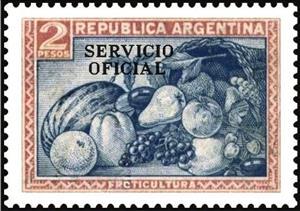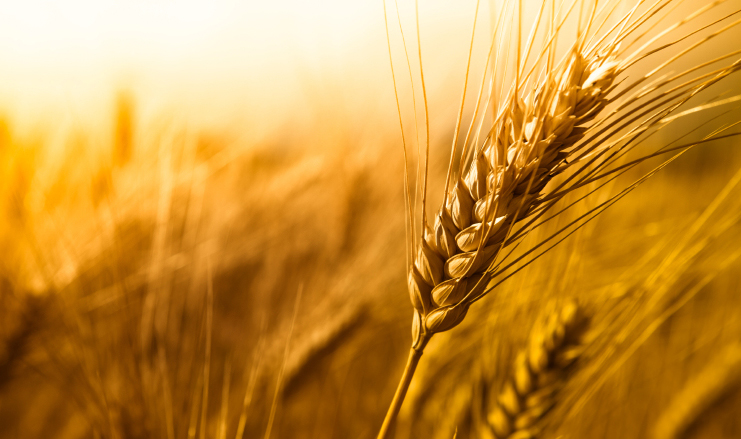Stamp: Fruits, ovpt. (Argentina 1955)
Fruits, ovpt. (Argentina 1955)
01 January (Argentina ) within release Official goes into circulation Stamp Fruits, ovpt. face value 2 Argentine peso moneda nacional
| Stamp Fruits, ovpt. in catalogues | |
|---|---|
| Gz (Cefiloza): | Gz: AR O575ba |
Stamp is horizontal format.
Offset overprint SERVICIO OFICIAL, 10¾ mm long. Frame size 32,2 x 21,7 mmAlso in the issue Official:
- Stamp - José Francisco de San Martin, ovpt. face value 20;
- Stamp - Fruits, ovpt. face value 2;
- Stamp - José Francisco de San Martín (1778-1850), ovpt. face value 20;
- Stamp - José Francisco de San Martín (1778-1850), ovpt. face value 20;
- Stamp - Fruits, ovpt. face value 2;
- Stamp - Fruits, ovpt. face value 2;
- Stamp - Bernardino Rivadavia (1780-1845), ovpt. face value 10;
- Stamp - José Francisco de San Martín (1778-1850), ovpt. face value 20;
- Stamp - Waterfalls of Iguazù, ovpt. face value 5;
- Stamp - Oil well, ovpt. face value 50;
Stamp Fruits, ovpt. it reflects the thematic directions:
Agriculture is the cultivation and breeding of animals, plants and fungi for food, fiber, biofuel, medicinal plants and other products used to sustain and enhance human life.[1] Agriculture was the key development in the rise of sedentary human civilization, whereby farming of domesticated species created food surpluses that nurtured the development of civilization. The study of agriculture is known as agricultural science. The history of agriculture dates back thousands of years, and its development has been driven and defined by greatly different climates, cultures, and technologies. Industrial agriculture based on large-scale monoculture farming has become the dominant agricultural methodology.
A crop is a plant that can be grown and harvested extensively for profit or subsistence. In other words, crop is a plant or plant product that is grown for a specific purpose such as food, fibre or fuel.
When plants of the same species are cultivated in rows or other systematic arrangements, it is called crop field or crop cultivation.
In botany, a fruit is the seed-bearing structure in flowering plants (also known as angiosperms) formed from the ovary after flowering. Fruits are the means by which angiosperms disseminate seeds. Edible fruits, in particular, have propagated with the movements of humans and animals in a symbiotic relationship as a means for seed dispersal and nutrition; in fact, humans and many animals have become dependent on fruits as a source of food. Accordingly, fruits account for a substantial fraction of the world's agricultural output, and some (such as the apple and the pomegranate) have acquired extensive cultural and symbolic meanings. In common language usage, "fruit" normally means the fleshy seed-associated structures of a plant that are sweet or sour, and edible in the raw state, such as apples, bananas, grapes, lemons, oranges, and strawberries. On the other hand, in botanical usage, "fruit" includes many structures that are not commonly called "fruits", such as bean pods, corn kernels, tomatoes, and wheat grains. The section of a fungus that produces spores is also called a fruiting body.



